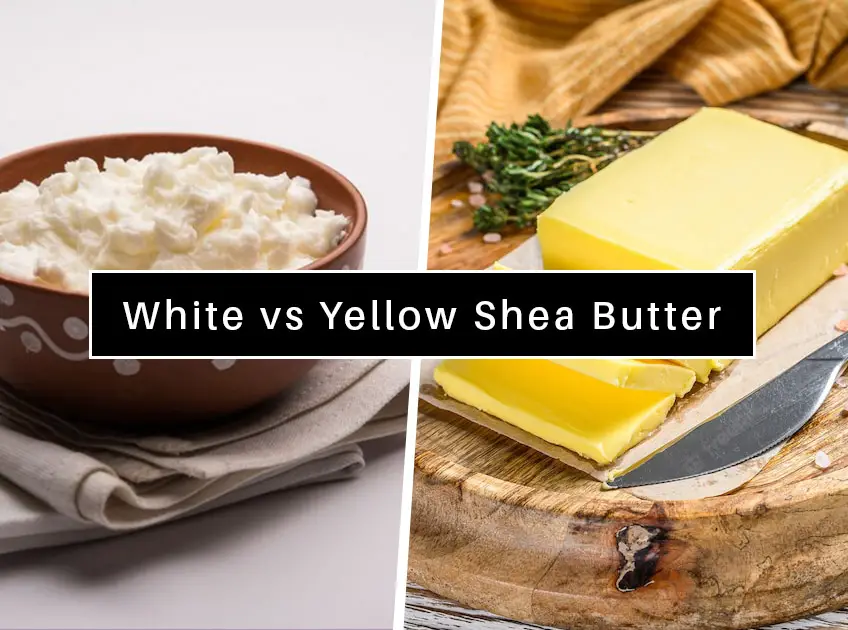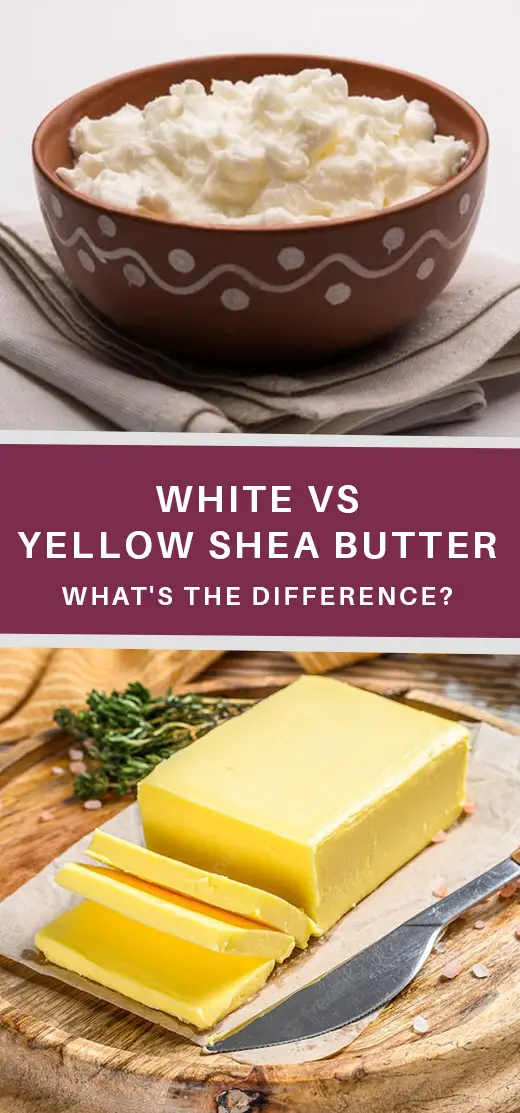
Important: This article is for informational purposes only. Please read our full disclaimer for more details.
Shea butter is an icon of African beauty. It’s been used for centuries to moisturize and protect skin, and it’s a staple ingredient in many hair and skincare products. But did you know that there are actually two types of shea butter?
White shea butter is extracted from the nuts of the shea tree, and has a light, creamy texture. It’s odorless and has a neutral taste, making it ideal for cooking and baking.
Yellow shea butter, on the other hand, is extracted from the nuts that have been roasted first. This gives it a deeper color, slightly nutty flavor, and more intense aroma. It’s also a bit more difficult to find than white shea butter.
So, what’s the difference between these two types of shea butter? Let’s take a closer look.
Difference Between White And Yellow Shea Butter
Color
The most obvious difference between white and yellow shea butter is the color. White shea butter is, well, white. It can also be pale yellow, but it’s usually closer to white. Yellow shea butter, on the other hand, is a deep golden color.
Texture
White shea butter has a light, creamy texture that’s easy to spread. It melts quickly and absorbs into the skin without leaving behind any greasy residue.
Yellow shea butter is also creamy, but it’s a bit thicker than white shea butter. It may take longer to melt and absorb into the skin, but it’s still just as effective at moisturizing and protecting.
Aroma
White shea butter is odorless, while yellow shea butter has a slightly nutty scent. This is because yellow shea butter is made from roasted nuts, while white shea butter is not.
Flavor
White shea butter has a neutral taste, making it ideal for cooking and baking. Yellow shea butter has a slightly nutty flavor that can be tasted when used in recipes.
Benefits
Both white and yellow shea butter offer the same benefits. They’re both rich in vitamins A and E, which help to protect the skin from damage. They’re also both effective at moisturizing and soothing dry, irritated skin.
How To Use
White and yellow shea butter can be used in the same ways. They can both be applied to the skin as a moisturizer, used in hair care products, or added to recipes for a boost of moisture.
The Bottom Line
Both white and yellow shea butter offer the same benefits. They’re both rich in vitamins and minerals, and they’re both effective at moisturizing and protecting the skin. The main difference is the color, texture, aroma, and flavor. White shea butter is lighter in color and texture, and it has a neutral taste. Yellow shea butter is darker in color and slightly thicker in texture. It also has a nutty scent and flavor. So, which one should you choose? It all comes down to personal preference. If you’re looking for an unscented, flavorless butter, go with white shea butter. If you don’t mind a nutty scent and flavor, yellow shea butter is a great choice. Whichever you choose, you’ll be getting all the amazing benefits of shea butter.
Do you prefer white or yellow shea butter? Let us share this article to your friends on social media!!
You Might Also Like:
- Difference Between Beard Balm And Beard Butter
- Difference Between Coconut Oil And Coconut Butter
- Difference Between Cheese And Butter
- How to Use Cocoa Butter for Scars?
- Difference Between Sweet Cream And Butter
- Does Tanning Lotion Expire?
- Difference Between Unrefined And Refined Shea Butter
- Difference Between Body Butter And Lotion
- How to Use Cocoa Butter for Stretch Marks?
















